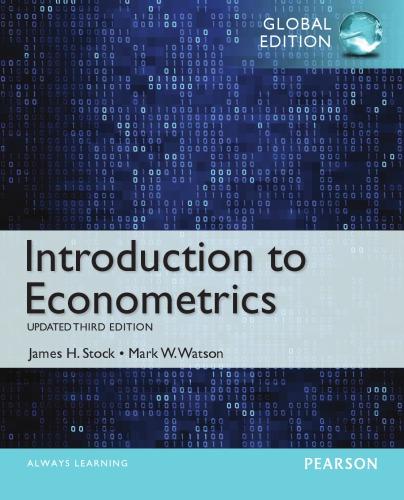8.3 After reading this chapters analysis of test scores and class size, an educator comments, In my...
Question:
8.3 After reading this chapter’s analysis of test scores and class size, an educator comments, “In my experience, student performance depends on class size, but not in the way your regressions say. Rather, students do well when class size is less than 20 students and do very poorly when class size is greater than 25. There are no gains from reducing class size below 20 students, the relationship is constant in the intermediate region between 20 and 25 students, and there is no loss to increasing class size when it is already greater than 25.” The educator is describing a “threshold effect”
in which performance is constant for class sizes less than 20, then jumps and is constant for class sizes between 20 and 25, and then jumps again for class sizes greater than 25. To model these threshold effects, define the binary variables STRsmall = 1 if STR 6 20, and STRsmall = 0 otherwise;
STRmoderate = 1 if 20 … STR … 25, and STRmoderate = 0 otherwise; and STRlarge = 1 if STR 7 25, and STRlarge = 0 otherwise.
a. Consider the regression TestScorei = b0 + b1STRsmalli + b2STRlargei
+ ui. Sketch the regression function relating TestScore to STR for hypothetical values of the regression coefficients that are consistent with the educator’s statement.
b. A researcher tries to estimate the regression TestScorei = b0 +
b1STRsmalli + b2STRmoderatei + b3STRlargei + ui and finds that the software gives an error message. Why?
Step by Step Answer:

Introduction To Econometrics
ISBN: 9781292071367
3rd Global Edition
Authors: James Stock, Mark Watson






